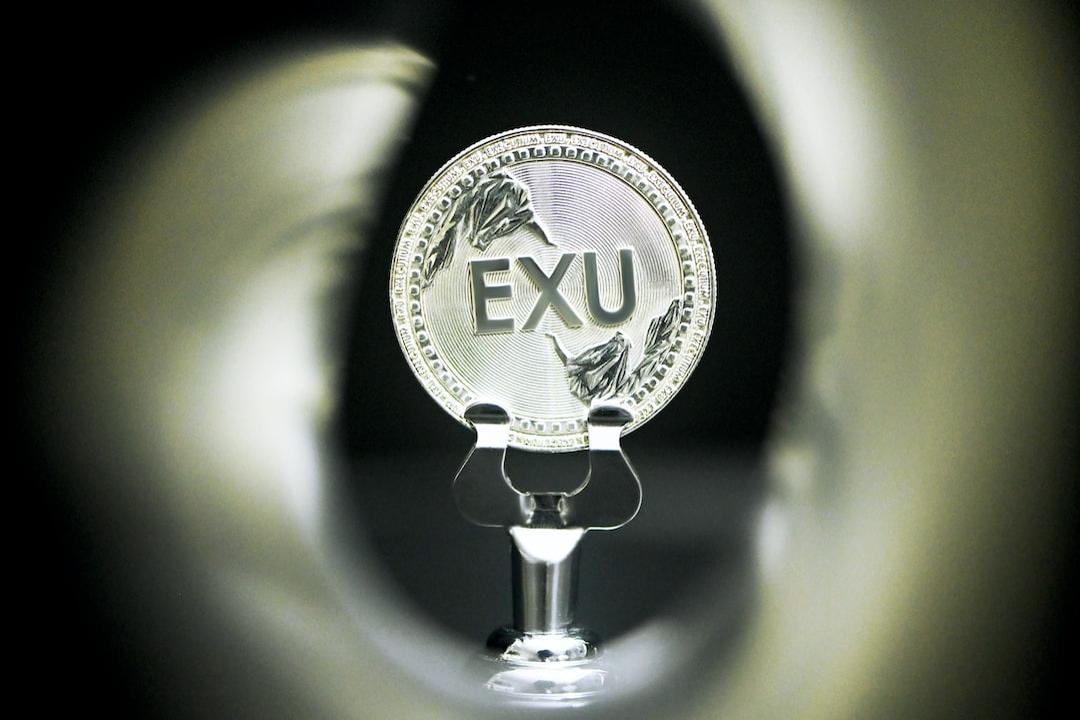Universities Have Become the “Factions” of the Crypto World
In August 2025, Bitcoin’s price surpassed $120,000, pushing the once “fringe asset” back onto the mainstream stage. This driving force is not only from Wall Street’s hedge funds but also from the most conservative and astute fund managers within Ivy League campuses.
On August 9, the U.S. Securities and Exchange Commission (SEC) released its 13F filings, revealing a detail that caught the market’s attention:
Harvard University’s Endowment Fund (approximately $53.2 billion in size) held $116 million worth of Bitcoin ETF (IBIT) in Q2 2025. This position was its fifth largest investment, following Microsoft, Amazon, Booking Holdings, and Meta, and even surpassed the position sizes of Google’s parent company Alphabet and Nvidia.


Harvard is not an isolated case.
Brown University, Emory University, and the University of Austin have publicly disclosed their cryptocurrency holdings.


The “miser” within these ivory towers embracing cryptocurrencies is not a spur-of-the-moment decision but rather the surface emergence of many years of strategic planning. The capital, talent, and technology from these prestigious institutions have already deeply rooted themselves in the crypto industry.
However, this time, they have been pushed to the forefront of the stage.
Investing in Crypto Amidst the Bubble Burst
2018 was a dark moment for the cryptocurrency industry. As the ICO bubble burst, the global market capitalization of crypto assets evaporated by over $630 billion, falling to less than $200 billion. Bitcoin dropped to $3,000, and Ethereum fell to $80, prompting retail investors to flee and cryptocurrencies to be labeled as “Ponzi schemes.” Even Facebook announced a ban on cryptocurrency-related advertisements.
At this time when everyone was avoiding crypto, Yale University’s endowment fund made a decision that seemed to “contradict its traditional teachings.”
Under legendary investor David Swensen’s leadership, in October 2018, Yale joined Harvard, Stanford, and other top institutions to invest in Paradigm’s newly established $450 million crypto fund, co-founded by Coinbase’s Fred Ehrsam and former Sequoia Capital partner Matt Huang. Simultaneously, Yale also participated in a16z’s inaugural $400 million crypto fund.
Looking back, this investment during the trough not only influenced the developmental trajectory of Paradigm and a16z but also, to some extent, accelerated the historical process of the crypto industry.
According to the original plan, Paradigm aimed to allocate 60% of its funds to crypto assets and 40% to equity in crypto startups. However, after securing the funding, Paradigm made a risky decision—through its trading platform Tagomi, it heavily accumulated Bitcoin and Ethereum, with Bitcoin’s entry cost around $4,000. Just a few months later, in the first half of 2019, Bitcoin’s price temporarily surpassed $10,000.
For university endowment funds, at that time, there was no means to directly purchase Bitcoin, nor were there compliant ETF products. Allowing Paradigm to hold crypto assets for them was a “curved approach” strategy. Even in the event of losses, the foundation could achieve risk isolation from a compliance and liability perspective.
How Matt Huang managed to convince the Yale fund to invest in a newly established crypto fund remains somewhat of a mystery. Although Matt Huang’s mother, Marina Chen, was a professor in the Yale Computer Science department, there is no evidence to suggest she influenced Yale’s investment in Paradigm.
Through an article published by Matt Huang in 2020 titled “Preaching Bitcoin to Open-Minded Skeptics,” we may glimpse how he persuaded the investment heads of various university funds. In Matt Huang’s view, the bubble is not a flaw but a necessary path for Bitcoin to gain broader acceptance. Each bubble expands Bitcoin’s recognition and acceptance. Bitcoin will not challenge the dollar’s status as an exchange medium in the short term but will stand alongside gold as a hedge tool in investment portfolios, held by institutional investors, until central banks may eventually consider Bitcoin as a reserve.


For the crypto industry, Paradigm is not just an investment institution bringing capital but an important builder.
In April 2019, Paradigm led a seed round investment of $1 million into Uniswap. At that time, Uniswap had not even established a company, and the developer was just its founder, Hayden Adams, a mechanical engineer who had been laid off from Siemens and had started self-learning Solidity in 2017.
Not only did Paradigm invest, but their research team member Dan Robinson was almost daily engaged in Uniswap’s Discord, helping to solve liquidity and smart contract issues.
Through their collaboration, the AMM model was born, igniting the DeFi summer.
Paradigm has invested in numerous star projects, including StarkWare, Mina, Uniswap, Compound, MakerDAO, Yield, Optimism, Amber, Fireblocks, Synthetix, Opyn, TaxBit, BlockFi, Chainalysis, Gitcoin, Lido, dYdX, among others.
Another crypto fund in which Yale invested early, a16z crypto, similarly shaped the industry’s development, investing in well-known projects such as Coinbase, Solana, Aptos, Avalanche, and Arweave. Beyond investments, a16z has deeply engaged in industry development through its public policy influence, donating tens of millions to the super PAC Fairshake in support of crypto issues, and betting on Trump’s victory to secure a more favorable crypto policy environment.
Going back to late 2018, all of this began with the legendary investor David Swensen.
As the highest-paid individual at Yale, he has managed billions of dollars in endowment funds for the past 34 years, expanding the fund size from $1 billion to $31.2 billion, achieving an average annual return of nearly 17%.
The “Yale Model” he pioneered has become the gold standard for university endowment funds globally. Many fund heads at top schools like Princeton, Stanford, MIT, and UPenn are his former employees, known as the “Yale Faction.”
Yale’s entry quickly triggered a chain reaction. Harvard, Stanford, MIT, and other Ivy League schools followed suit around the same time. The Information reported at the end of 2018 that Harvard, Stanford, Dartmouth College, MIT, and the University of North Carolina had invested in at least one cryptocurrency fund through their respective endowment funds.
In a sense, Yale’s investment in 2018 was not only a timely aid during the industry’s winter but also a high-profile vote of confidence in the future of the crypto industry.
The Crypto Factions in Prestigious Schools
Beyond capital and endorsement, the more profound impact of the world’s top universities on the crypto industry lies in people.
Wherever there are people, there is a community, and many “leaders” and core forces in the crypto community have emerged from prestigious schools, gradually forming an invisible yet powerful “university gang.”
In the Chinese-speaking world, Tsinghua University is undoubtedly the most influential presence. The original founder of Huobi, Li Lin, graduated from Tsinghua University’s Automation department; the core team of the high-performance Layer 1 blockchain Conflux comes from Tsinghua’s Yao Class; the founder of blockchain security company CertiK, Gu Ronghui (CEO), also graduated from Tsinghua.
The founders of Tron, Sun Yuchen, and Bitmain, Wu Jihan, both graduated from Peking University.
The alumni projects from Zhejiang University are spread across Web3 applications, covering various C-end applications from the NFT trading platform Magic Eden to the NFT data platform NFTGo, from the viral blockchain game Stepn to the hardware wallet Keystone.
Abroad, prestigious school backgrounds are almost a standard for founders in the crypto industry.
The Stanford faction, relying on its heartland position in Silicon Valley, has significant influence in the crypto industry, nurturing founders of star projects such as OpenSea, Alchemy, Filecoin, Story, and other notable industry leaders like Lily Liu from the Solana Foundation.
At Stanford University’s blockchain conference in 2019, star sponsors gathered, with well-known projects and institutions like Ethereum, Cosmos, Polychain prominently listed, rivaling many large crypto conferences.


The MIT faction excels in technical research. MIT’s Digital Currency Initiative team participated in the development of Zcash, which was chosen by MIT in 2018 as one of the top ten breakthrough technologies globally. After all, zero-knowledge proofs (ZK), a milestone technology in cryptography, were proposed by MIT researchers in the 1980s.
MIT professor and Turing Award winner Silvio Micali even personally participated, founding the efficient public chain Algorand in 2017.
The roster of MIT alumni reads like a “crypto stars list”: Paradigm founder Matt Huang, MicroStrategy founder Michael Saylor, StarkWare co-founder Uri Kolodny, Litecoin founder Charlie Lee, and FTX founder SBF all hail from MIT.
UC Berkeley (UCB) is also very active in entrepreneurship and incubation.
In January 2019, Berkeley established the blockchain startup accelerator Berkeley Blockchain Xcelerator, co-operated by the Haas School of Business, SCET, and Berkeley Blockchain, which incubates a batch of early-stage crypto projects each year, having accelerated over a hundred companies to date. Computer science professor Song Xiaodong personally founded the privacy public chain Oasis Network. Other notable UCB projects include Galxe, Osmosis, Sei Network, Opyn, Ampleforth, Kadena, etc.
The Princeton faction has a profound influence in the investment domain.
In 2022, four alumni from the class of 1987, Ethereum co-founder Joseph Lubin, Pantera Capital founder Daniel Morehead, Galaxy Digital founder Michael Novogratz, and Fortress Investment Group’s Peter Briger, jointly donated $20 million to their alma mater to kickstart a blockchain research initiative.
Notably, Morehead received early support from Briger and Novogratz when founding Pantera, which has now grown into a top crypto fund managing over $5 billion in assets.
In an industry that emphasizes “Don’t Trust, Verify,” trust between individuals is particularly precious.
Alumni relations serve as this natural bond of trust: founders are more inclined to hire alumni, and investors are more willing to invest in alumni, thus forming invisible barriers of “gang culture.”
After Li Lin founded Huobi, he brought in classmates Lan Jianzhong and Zhu Jiawei, with over half of the management coming from Tsinghua. Former CEO Qiye and CFO Zhang Li also graduated from Tsinghua. Wu Jihan similarly retained Peking University classmates for support at Bitmain.
Today, blockchain courses have become standard in major universities, with student blockchain clubs and alumni networks interweaving into an invisible web of talent and capital.
Stanford’s CBR conference, Berkeley’s Xcelerator, and MIT’s DCI hackathons continuously inject new blood into the crypto world.
Not just “early investors” in the industry, universities have become the “factions” of the crypto world.
Risk Warning
Investing in cryptocurrencies carries a high level of risk, and their prices can be highly volatile; you may lose all your principal. Please evaluate risks cautiously.

